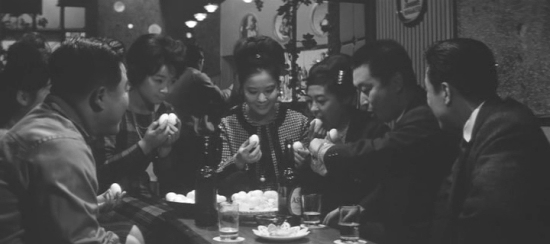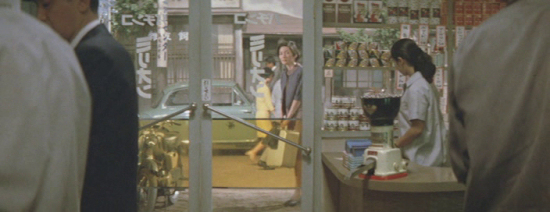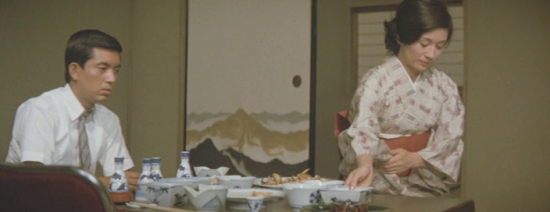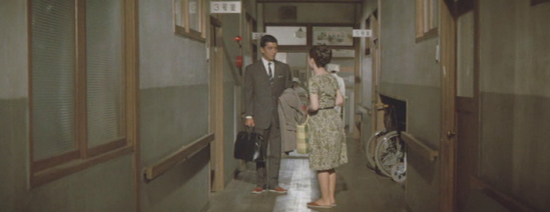
And so the "Rebuild of Evangelion" continues with You Can (Not) Redo, the third in the effort to remake/re-imagine/re . . . well, do, however you want to say it, of the anime television series Neon Genesis Evangelion in the format of a movie series by the people who created it to begin with. Hideaki Anno once again is chief director and Kazuya Tsurumaki, director of FLCL and Gunbuster 2, serves again as his second in command. As with the first two films, fans of the original series will be, I think, at turns thrilled and puzzled by this film. People unfamiliar with the series may only feel the latter for the film's disjointed characterisations and the visual noise of its action sequences. At the same time, the art design and animation, particularly towards the end of the film, are strikingly visceral.
v
I'm a big fan of the original series, which is an intriguing phenomenon in Japan, a franchise almost analogous to Star Wars in the U.S. The strange thing about the series' popularity is that its best and most well known episodes, although they unabashedly feature fan-service, don't make their impacts with the action sequences and beautiful girls one associates with anime. The show was an extraordinarily personal statement by Anno, its director, about his clinical depression and in his statement he employed a variety of new techniques and story telling devices rarely or not at all seen in anime before and widely imitated since--protagonists with complex mental issues who frequently question themselves and feel debilitating guilt, expressionistic renderings of psychological states, fusions of mystery stories with dream sequences and psychological damage, expressionistic digestions of the protagonist's attraction to and guilt about women mirroring many of the otaku viewers. Strange, bold, complex, sad and savage; qualities not normally associated with blockbusters in any country.

The new films are much closer to what one would expect from something so popular. The animation is more expensive and refined, the imagery is never so abstract, the expressionism coming through entirely in the design of environments and monsters, and the fan service is more disconnected from the character development. The first film is essentially an update of the first few episodes of the series, but the second film was so extraordinarily muddled I found I had to re-read my own review of it from 2010 just to remember how I felt about it.
The new movie isn't quite so muddled, mainly because Anno seems to have taken the opportunity to expand on the character of Kaworu Nagisa, a crucial character who was introduced and killed off in the span of one thirty minute episode of the original series.

In both cases, he's a pilot for one of the giant biomechanical robot weapons, the Evangelions, introduced after the male protagonist, Shinji, has undergone trauma that's virtually destroyed Tokyo-3 along with Rei, another pilot and one of the female protagonists. One of the interesting aspects of the second film is that it makes clearer the fact that Rei is a clone of Shinji's deceased mother and when another clone is created in the third movie her cooler emotional responses stand in starker contrast to the first clone.

Surrounded by confusing and frightening circumstances and his own frightening and ambiguous responsibility at the middle of it, Shinji finds respite in the confident and affectionate Kaworu.

Maybe it's because Kaworu is male that the fan service does not derail the development of his relationship with Shinji, though the original series, as I've said, had a remarkable way of providing fan service that was germane to the story. In any case, the two boys have a better opportunity to develop their hesitant romance. Kaworu single-handedly seems to provide a healing influence over both Shinji's mother issues and his father issues, it's no wonder he turns out to be an Angel, a member of the alien species called Angels that serve as the series' and movie's primary antagonists.

Kaworu enlivens the subtext quite a bit for this reason. Shinji's forced to wear a collar for "his sins" in the movie that threatens to behead him if he attempts to use his Evangelion. Kaworu takes the collar from Shinji and wears it, both creating the impression of a Christ figure and playing on the BDSM theme. It's an effective extension of the show's themes about anxious morality and guilt.

Of the female characters, Asuka comes off much better here than in the second film, though people who've never seen the original series may wonder why she gets so much of the spotlight here after she was sidelined for the new character, Mari, in the second film.

Mari's in the new film, too, but seems utterly pointless. She has no position in the character dynamics and plot-wise provides sniper support invented seemingly just to give her something to do. She was introduced entirely for fan service purposes, though I don't really see what we're supposed to get from her we couldn't get from Asuka or Misato. I guess there are guys who go wild for glasses missing the top of their frame.
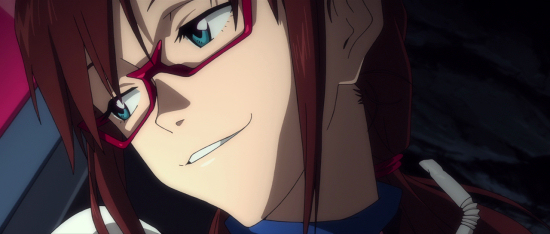
The movie opens with an almost incomprehensible battle with an Angel in orbit, but the visuals become better beginning with Shinji's time with Kaworu with black and white and red and green renderings of devastated metropolis.

This is followed up by an exciting final series of action sequences visually exploring the characters' bestial natures through their Evangelions.

The dynamic between Rei and Asuka and Shinji, central to the series, is hinted at at the end. There's a potential for the fourth movie to do something interesting with them, though there's perhaps something less intriguing about the surety of the two girls' characterisations. Asuka is more definitely a brutal, emotionally closed off dominatrix, Rei is more definitely Shinji's kind and protective mother. It seems like Shinji may have an easier time sorting out his feelings for them in any case.






